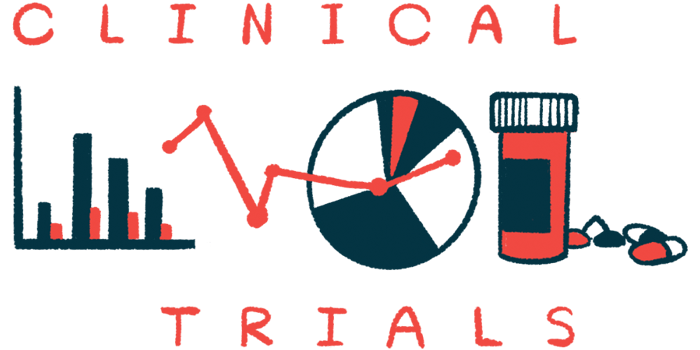SCD patients free of VOEs after treatment with gene-editing therapy
Nearly all the patients with severe sickle cell disease (SCD) who were treated with renizgamglogene autogedtemcel (reni-cel) remained free of vaso-occlusive events (VOEs) for up to two years, new data from the Phase 1/2/3 RUBY clinical trial shows.
The treatment also increased total hemoglobin levels and was well tolerated, according to a company press release from Editas Medicine, the developer of the gene-editing therapy.
Data from 28 patients was presented at the Annual Meeting and Exposition of the American Society of Hematology (ASH) in a poster presentation titled, “Reni-Cel, an Investigational AsCas12a Gene-Edited Cell Medicine, Led to Sustained Hemoglobin Normalization and Increased Fetal Hemoglobin in Patients with Severe Sickle Cell Disease Treated in the RUBY Trial.” The presentation was made by Rabi Hanna, MD, from the department of Pediatric Hematology, Oncology, and Blood and Marrow Transplantation at Cleveland Clinic Children’s hospital.
SCD is caused by mutations in the HBB gene that lead to the production of a defective version of adult hemoglobin, the protein that transports oxygen in red blood cells. As a result, the cells take on a sickle-like shape and die prematurely (hemolysis), often causing patients to develop anemia, one of the most common SCD symptoms.
People with SCD may also experience VOEs, which include painful vaso-occlusive crises (VOCs) and other complications that occur when sickled cells obstruct blood vessels and block blood flow, depriving tissues of oxygen.
Reni-cel, formerly EDIT-301, was designed to increase the production of fetal hemoglobin (HbF), a type that’s typically made during early fetal development and is more efficient at carrying oxygen than the protein’s adult version.
What is reni-cel gene-editing therapy?
The treatment involves collecting hematopoietic stem cells — which are capable of giving rise to all types of blood cells — from a patient’s bone marrow and modifying them to introduce genetic changes that mimic those naturally found in people with hereditary persistence of fetal hemoglobin, a benign condition where HbF production persists into adulthood.After a course of chemotherapy to destroy stem cells in the bone marrow and make room for the modified ones, the engineered stem cells are infused back into the patient via a stem cell transplant. These modified stem cells are then expected to give rise to red blood cells that can produce HbF, which should reduce red blood cell sickling and the frequency of VOEs.
The Phase 1/2/3 RUBY trial (NCT04853576) is evaluating the safety and efficacy of a single infusion of reni-cel in patients with severe SCD, which is defined as those having at least two severe VOEs that require medical attention per year in the two years before entering the study. The patients, who researchers described as “broadly representative of the overall population of patients with severe SCD,” were a mean age of 26.1 and more than half were women (53.6%). In the two years before enrolling they had a mean of 4.6 severe VOEs a year.
Consistent with previous data, all but one patient remained free of VOEs from the time they received treatment, with the follow-up ranging from about 21 days to 25.5 months, or about two years. Moreover, after six months, the patients’ total hemoglobin levels increased to a mean of 13.8 g/dL, and HbF levels reached 48.1%. The mean percentage of HbF-producing red blood cells increased early and was maintained above 90% from four months post-treatment up to the last follow-up.
Also, mean corpuscular fetal hemoglobin, the average fetal hemoglobin levels, in HbF-producing red blood cells increased early and remained above the sickling threshold of 10 picograms per cell through the last follow-up. Markers of hemolysis reduced or normalized six months after treatment and generally remained the same at the last evaluation.
Sustained clinically meaningful improvements in patient-reported outcomes were also reported after treatment across several domains, including pain, physical function, social roles and activities.
Transplanted stem cells survived and expanded within the bone marrow in all the evaluated patients. The treatment was also well tolerated, with the therapy’s safety profile being consistent with a stem cell transplant and chemotherapy conditioning with busulfan.
Two serious adverse events were considered to be possibly related to reni-cel: a case of cute respiratory distress syndrome and another of eosinophilic gastroenteritis, a gastrointestinal disease.
Sickle Cell Disease, hemoglobinopathy, sickle hemoglobin, red blood cell deformity, vaso-occlusion, chronic hemolysis, anemia, oxidative stress, genetic mutation, hemoglobin S, pain crisis, hydroxyurea therapy, bone marrow transplant, disease management, erythrocyte dysfunction, ischemia-reperfusion injury, pediatric hematology, genetic counseling, stroke in SCD, organ damage, fetal hemoglobin, quality of life, inflammation in SCD, sickle cell trait, patient advocacy, public health,
#SickleCellDisease #SCD #Hemoglobinopathy #RedBloodCells #VasoOcclusion #Anemia #GeneticDisorder #HemoglobinS #PainCrisis #Hydroxyurea #BoneMarrowTransplant #DiseaseManagement #PediatricHematology #GeneticCounseling #StrokeSCD #ChronicHemolysis #FetalHemoglobin #OrganDamage #Inflammation #SickleCellTrait #OxidativeStress #PatientAdvocacy #PublicHealth #QualityOfLife #SickleCellAwareness
International Conference on Genetics and Genomics of Diseases
Award Nomination: genetics-conferences.healthcarek.com/award-nomination/?ecategory=Awards&rcategory=Awardee
Award registration: genetics-conferences.healthcarek.com/award-registration/
For Enquiries: genetics@healthcarek.com
Get Connected Here
---------------------------------
---------------------------------

Comments
Post a Comment